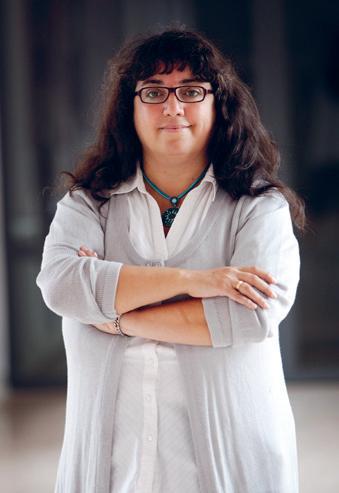
4 minute read
He found his stolen
News Stolen doctoral thesis
Illustration: MARIA KÄLLSTRÖM
Advertisement
Who is Mokolo Emmanuel Ekenedilichukwu? That is what the archaeologist Staffan Lundén asked when, some time ago, he found out that Amazon was selling the book, The Stolen African Art in British Museum for 149 pounds.
Because the book is available to download free of charge from GUPEA. And it was not written by Ekenedilichukwu – it is Staffan Lundén’s doctoral thesis.
– IT BEGAN WHEN a colleague in the Netherlands contacted me. She had seen a book on Amazon’s website that she felt was quite reminiscent of my thesis. Obviously, it made me curious. It turned out that the book was not only reminiscent of my thesis, it WAS my thesis. Except for the author’s name and a slightly altered title – my book is called Displaying Loot. The Benin objects and the British Museum – it was an exact copy. The same text, the same pictures, even the same dedications to people who had contributed to my research.
Staffan Lundén contacted the university’s senior legal counsel, Sara Dahlberg, to help him fill out the documents that Amazon required in order to withdraw the book. Somewhat less expected was the fact that he received an email from Mr Ekenedilichukwu, the person who had plagiarised his work. – He explained that he had not made any money from the book, but that he had copied it as two of his own books had been stolen. He also told me that he chose my book because his mother hails from a royal family in Benin and that he can therefore confirm that the contents are correct. I later checked up on Mr Ekenedilichukwu and he is listed as the author of an additional five books. Whether he has actually written them, or stolen them too, I do not know, obviously.
Of course, copying an entire book is something that is rather peculiar. But
Staffan Lundén

Staffan Lundén is not alone in having his writing plagiarised. Maria Clara Medina, a researcher at the School of Global Studies, was contacted a while ago by a colleague who had read an article in a German journal that set her thinking. – She thought that the article was quite reminiscent of an article I had written. I looked into it and right enough, entire passages from one of my articles had been copied.
MARIA CLARA MEDINA contacted the journal’s editors to ask them to remove the article. – They responded quickly and apologised. But the story does not end there. Because it turned out that the disingenuous researcher, working at the University of Seville, was suspected of eleven additional plagiarisms. The Spa

Maria Clara Medina nish university had been informed of the thefts two years previously but explained that the university’s policy concerning cheating only applied to students, not lecturers! Only when the Spanish media started paying attention to the case did the university decide to take action. However, the researcher was not dismissed, instead he was suspended from lecturing and tutorials for one year.
THE NEW RULES, in place since January this year, make clear that plagiarism is one of the things that constitute fraudulent research, says the University of Gothenburg’s senior legal counsel, Sara Dahlberg. – What is particular about Staffan Lundén’s case is that an individual abroad, with no connections to a university
It turned out that the book was not only reminiscent of my thesis, it WAS my thesis.
STAFFAN LUNDÉN or equivalent, seems to have copied his thesis in its entirety, and passed himself off as the author. If that individual had been connected to a university, we could have contacted the university and requested an investigation, in accordance with international guidelines for good research practice. Now, instead, it is a matter of copyright infringement. The most reasonable course of action is to contact the company selling the book to get them to withdraw it. Of course, we could also sue the plagiarising “author”.
Maria Clara Medina argues that research colleagues need to help one another and act as a kind of “plagiarism police” when suspected writings or other material turn up. – I WRITE IN three different languages, and that makes it even more difficult to monitor whether someone has taken a section of text, translated it and then inserted it into an article of their own. For that reason, it is important to have attentive and helpful colleagues.
But Maria Clara Medina interprets the event as potentially somewhat positive as well. – One colleague pointed out, tongue in cheek, that perhaps you should be proud of having written something that others find so good that they want to copy it. – And that is one way of seeing it of course, says Staffan Lundén. In the future, it may be more common for researchers to not only list their citations when applying for funding, but also the number of plagiarisms…
Have you been plagiarised?
Contact the university’s legal department. More information can be found in the Science Council’s booklet Good Research Practice: https://www.vr.se/analys/rapporter/vara-rapporter/2017-08-29-god-forskningssed.html
Text: Eva Lundgren Photo: Johan Wingborg
It is available in both Swedish and English.
Above, Staffan Lundén’s doctoral thesis, below, the plagiarism.












